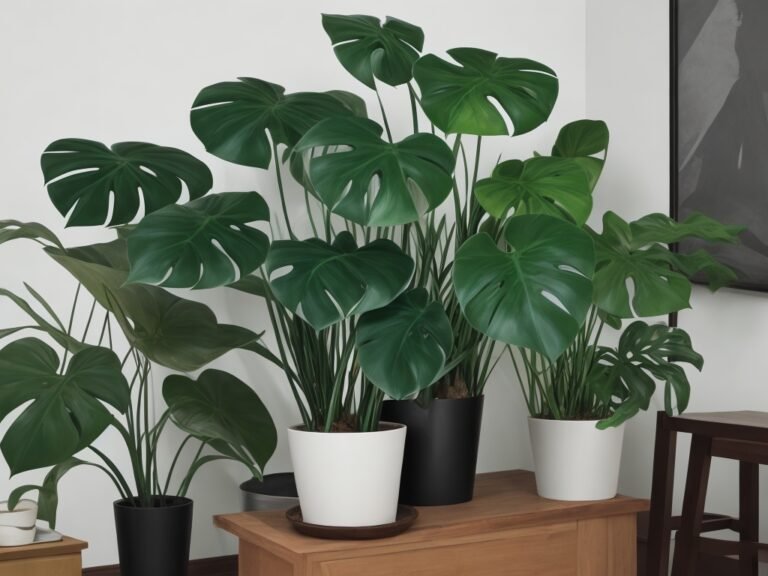How To Grow Monstera Borsigiana (Deliciosa Relative)?
Key Takeaways:
- Monstera borsigiana is a relative of the popular Monstera deliciosa plant.
- It grows best in well-draining soil and requires bright, indirect sunlight.
- Regular watering and occasional misting will keep the plant healthy and happy.
- Propagating Monstera borsigiana is relatively easy through stem cuttings or air layering.
Are you looking to add a touch of lush greenery to your home or office space?
Look no further than the Monstera borsigiana, also known as the delicious relative of the popular Monstera deliciosa.
This plant, with its iconic large and glossy leaves, is not only a stunning decorative addition but also relatively easy to grow.
In this article, I will guide you through the essential aspects of successfully cultivating a Monstera borsigiana.
We will discuss everything from choosing the right environment and propagation methods to watering and fertilizing techniques, pruning and training tips, common pests and diseases, and much more.
So, let’s dive in and get ready to cultivate your own thriving Monstera borsigiana!
| Aspect | Requirement |
| Light | Bright indirect light, can tolerate some shade |
| Watering | Allow top inch of soil to dry out before watering |
| Temperature | 65°F – 80°F (18°C – 27°C) |
| Humidity | High humidity, mist leaves or use a humidifier |
| Soil | Well-draining soil mix, rich in organic matter |
| Fertilizer | Fertilize monthly during growing season with balanced liquid fertilizer |
| Pruning | Remove dead or yellowing leaves, trim leggy growth to encourage bushiness |
| Propagation | Propagate from stem cuttings in water or directly in soil |
| Pests and Diseases | Watch out for spider mites, scale insects, and root rot |
Choosing the Right Environment
To ensure the optimal growth of your Monstera borsigiana, create an environment with ample light, suitable temperature and humidity levels, and the right potting mix.
Light requirements for Monstera borsigiana
Monstera borsigiana thrives in bright, indirect light.
Place it near a window with filtered light or in a well-lit room, but avoid direct sunlight as it can scorch the leaves.
If you notice your plant reaching towards the light, it may need more brightness.
Conversely, if the leaves start turning pale or yellow, it could be getting too much light.
Aim for consistent, moderate light for healthy growth.
Temperature and humidity considerations
Maintaining the right temperature and humidity levels is key for the healthy growth of Monstera borsigiana. Aim for a temperature range of 65-85°F (18-29°C), and avoid exposing it to extreme cold or hot conditions.
Keeping the humidity level between 60-70% creates the ideal tropical environment for your plant.
You can increase humidity by misting the leaves or using a humidifier.
Suitable potting mix for Monstera borsigiana
Monstera borsigiana thrives in a well-draining potting mix.
A suitable mix would consist of equal parts of peat moss, perlite, and coco coir.
This combination allows for proper moisture retention while preventing waterlogged roots.
Adding some orchid bark or charcoal can also improve drainage.
Regularly check the moisture level of the soil to ensure it doesn’t become overly dry or waterlogged.
Propagation Methods
There are two common propagation methods for Monstera borsigiana – stem cuttings and air layering.
Propagating Monstera borsigiana through stem cuttings
To propagate Monstera borsigiana through stem cuttings, select a healthy stem with at least one node and aerial root. Cut below the node, making sure the cutting is 6-12 inches long.
Place the cutting in water or well-draining soil, keeping it moist.
Roots will develop in a few weeks, and once established, you can transfer the cutting to a larger pot.
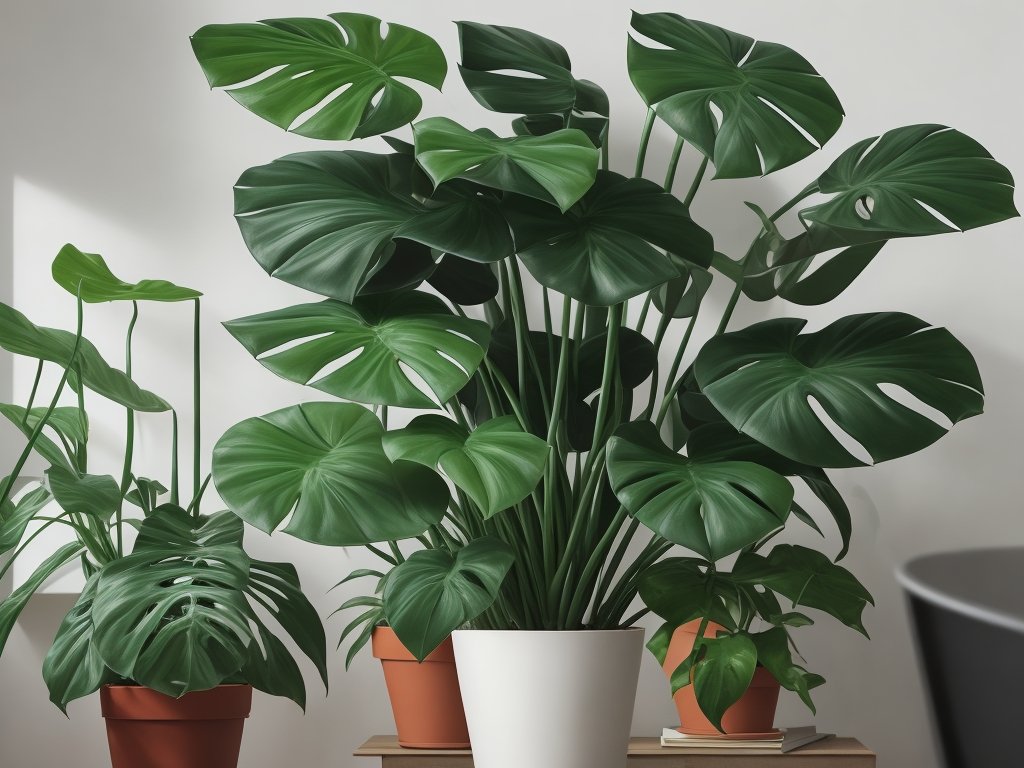
Propagating Monstera borsigiana through air layering
To propagate Monstera borsigiana through air layering, follow these steps:
- Identify a healthy stem with a leaf node.
- Make a vertical cut in the stem, just below the node.
- Place moist sphagnum moss around the cut area, covering it completely.
- Secure the moss with plastic wrap or a clear plastic bag.
- Wait for the roots to develop, which typically takes a few weeks to a few months.
- Once roots have formed, cut the rooted section from the parent plant and pot it in well-draining soil.
- Keep the new plant in a warm, humid environment until it establishes itself.
Watering and Fertilizing
Watering frequency and techniques: Find the right balance by watering your Monstera borsigiana when the top inch of soil feels dry, and make sure to water thoroughly until it drains from the bottom of the pot. Best fertilizers for Monstera borsigiana: Opt for a balanced, water-soluble fertilizer with a ratio of 20-20-20, or a slow-release organic fertilizer to provide essential nutrients for healthy growth.
Nutrient deficiencies and how to address them: Keep an eye out for signs of yellowing leaves (nitrogen deficiency), brown edges (potassium deficiency), or stunted growth (phosphorus deficiency), and address the issue by adjusting your fertilizing routine accordingly.
Watering frequency and techniques
Water your Monstera borsigiana when the top inch of soil feels dry. This typically means watering every 1-2 weeks, but it can vary depending on factors like temperature and humidity.
Water thoroughly until water drains out of the bottom of the pot.
Avoid overwatering or letting the plant sit in standing water. Regularly check the moisture level with your finger.
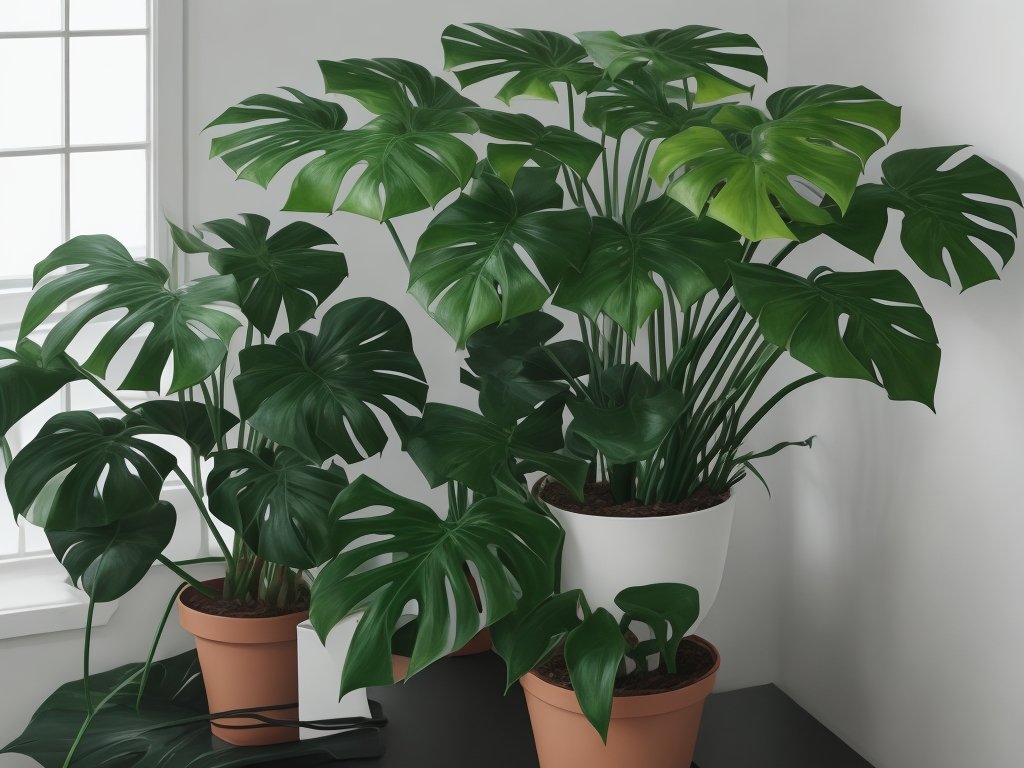
Best fertilizers for Monstera borsigiana
For best results, use a balanced, water-soluble fertilizer with an N-P-K ratio of 20-20-20 or 10-10-10. Apply the fertilizer every 2-3 months during the growing season, spring through summer.
Dilute the fertilizer according to package instructions and water thoroughly after application.
Avoid over-fertilizing, as it can cause fertilizer burn.
Nutrient deficiencies and how to address them
Nutrient deficiencies can cause issues in the growth and overall health of Monstera borsigiana.
Here are some common deficiencies and how to address them:
- Nitrogen deficiency: Leaves turn yellow and growth slows down. Address by applying a balanced fertilizer with higher nitrogen content.
- Phosphorus deficiency: Leaves turn dark green and show signs of stunted growth. Address by using a fertilizer with higher phosphorus content.
- Potassium deficiency: Leaves develop yellow or brown spots and may become scorched at the edges. Address by using a fertilizer with higher potassium content.
- Iron deficiency: Leaves turn yellow with green veins. Address by applying chelated iron foliar spray or using iron-rich supplements.
Remember, it’s important to identify the specific deficiency before addressing it.
Observing the symptoms and adjusting the nutrient application accordingly can help ensure the optimal growth of your Monstera borsigiana.
Pruning and Training
To keep your Monstera borsigiana healthy and in shape, pruning and training are essential techniques. Learn how to prune effectively and support your plant using structures.
Reasons for pruning Monstera borsigiana
Pruning Monstera borsigiana is important for several reasons. Firstly, it helps to promote healthy growth by removing dead or yellowing leaves.
Secondly, it controls the size and shape of the plant, preventing it from becoming too leggy or top-heavy.
Lastly, pruning can also encourage the development of new growth and increase the overall fullness of the plant.
Pruning techniques and tools
To properly prune your Monstera borsigiana, you’ll need a few essential tools.
These include clean and sharp pruning shears or scissors, a pair of gloves to protect your hands, and disinfectant wipes or rubbing alcohol to sterilize your tools between cuts.
When pruning, make sure to remove any dead, damaged, or diseased leaves, as well as any overcrowded or leggy growth.
You can also shape your plant by selectively cutting back long stems or vines.
Just be sure to make clean and precise cuts to promote healthy growth!
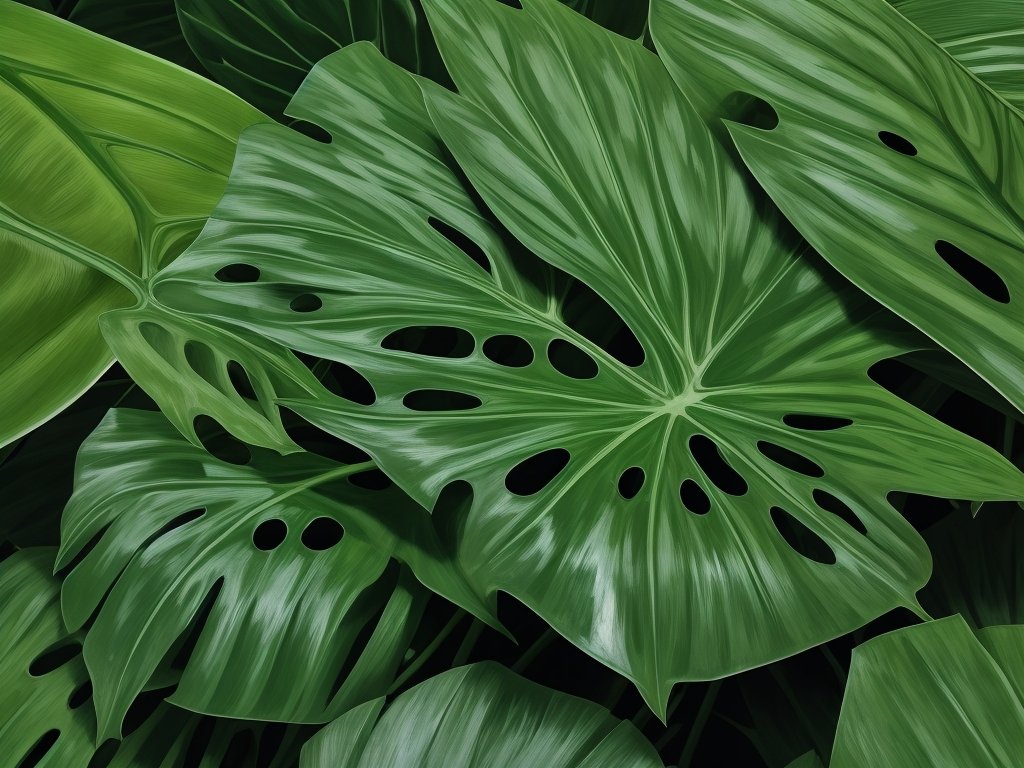
Training Monstera borsigiana using support structures
To train your Monstera borsigiana using support structures, you can use moss poles, trellises, or stakes. Gently attach the vines to the support structure using soft ties or twine.
Regularly check and adjust the attachment as the plant grows.
This will help promote upward growth and maintain an attractive shape.
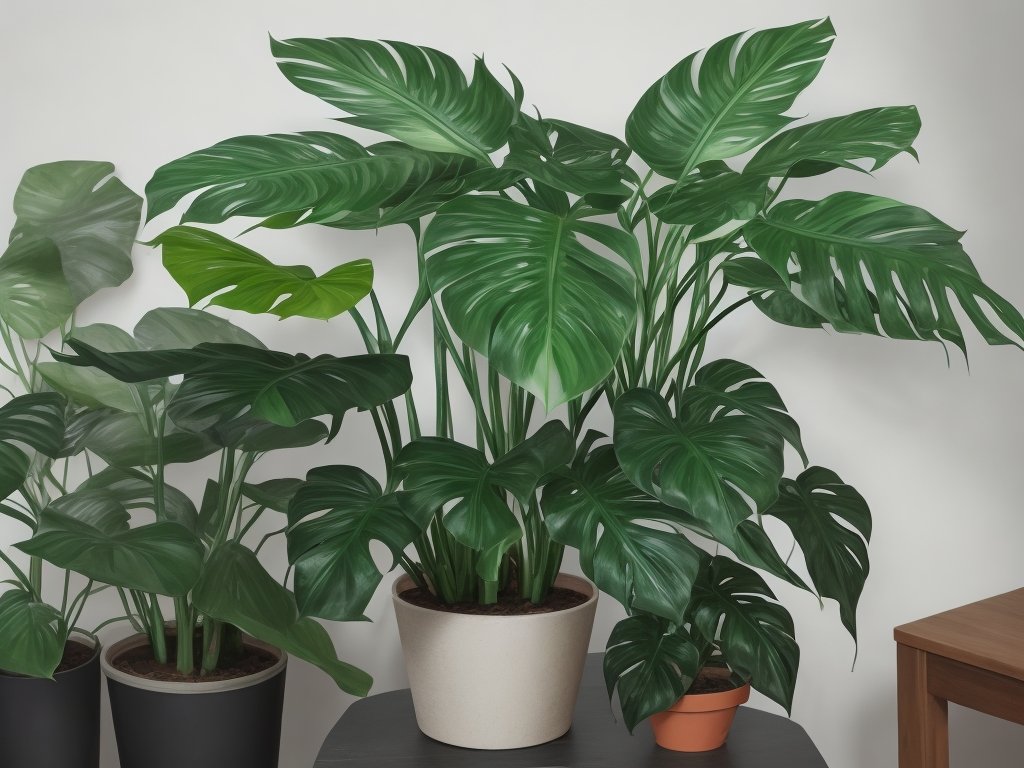
Common Pests and Diseases
Common pests that affect Monstera borsigiana include spider mites, mealybugs, and scale insects.
Infestations can be identified and treated through regular inspection and the use of organic pest control methods.
Common diseases that can affect Monstera borsigiana include root rot, leaf spot, and powdery mildew, which can be managed through proper watering, good airflow, and fungal treatments.
Common pests that affect Monstera borsigiana
Common pests that affect Monstera borsigiana include spider mites, mealybugs, and aphids. These pests can cause damage to the leaves by feeding on the plant sap and leaving behind yellowing or discolored spots.
Regularly inspect your plant for signs of infestation and treat with natural or chemical methods if necessary.
Identifying and treating pest infestations
To identify and treat pest infestations in your Monstera borsigiana, keep an eye out for common pests like spider mites, aphids, and mealybugs. Look for signs such as discolored leaves, webbing, or tiny insects.
Treat infestations by spraying with a mild insecticidal soap or neem oil.
Quarantine affected plants to prevent spreading. Regularly inspect your plant to catch any pests early and address them promptly.
Recognizing and managing common diseases
Recognizing and managing common diseases in Monstera borsigiana is essential for maintaining the plant’s health. Some typical diseases to watch out for include root rot, leaf spot, and powdery mildew.
To address these issues, ensure proper watering practices, provide good air circulation, and remove affected leaves.
Using fungicides or neem oil can also help control these diseases. Regularly inspecting your plant and taking prompt action will help keep it healthy and thriving.
Frequently Asked Questions
How fast does Monstera borsigiana grow?
Monstera borsigiana is a relatively fast-growing plant. Under optimal conditions, it can grow several inches to a foot or more in height each year.
With proper care, including adequate light, humidity, and regular watering, you can expect to see noticeable growth and development in your Monstera borsigiana within a few months.
Keep in mind that individual growth rates may vary.
Can Monstera borsigiana be grown in water?
Yes, Monstera borsigiana can be grown in water.
This plant can be propagated in water by placing the cuttings in a container with water and allowing them to develop roots.
Once the roots have formed, the plant can be transferred to a potting mix for continued growth.
How often should you repot Monstera borsigiana?
Monstera borsigiana should be repotted every 1-2 years. Signs that it needs repotting include roots growing out of the drainage holes or the plant becoming too large for its current pot.
Transplanting during spring is ideal, using a slightly larger pot with well-draining soil.
Final Verdict
Growing Monstera borsigiana can be a rewarding experience for plant enthusiasts. By providing the right environment with adequate light, temperature, and humidity, as well as using a suitable potting mix, you can ensure optimal growth and health for your plant.
Propagation can be done through stem cuttings or air layering, allowing you to expand your Monstera collection.
Watering and fertilizing should be done carefully, considering frequency and nutrient deficiencies. Pruning and training are essential for maintaining shape and managing growth.
Finally, being aware of common pests and diseases and knowing how to treat them is crucial for a thriving Monstera borsigiana.
So, with these tips in mind, get ready to watch your Monstera borsigiana thrive and add a touch of tropical beauty to your home or garden.







